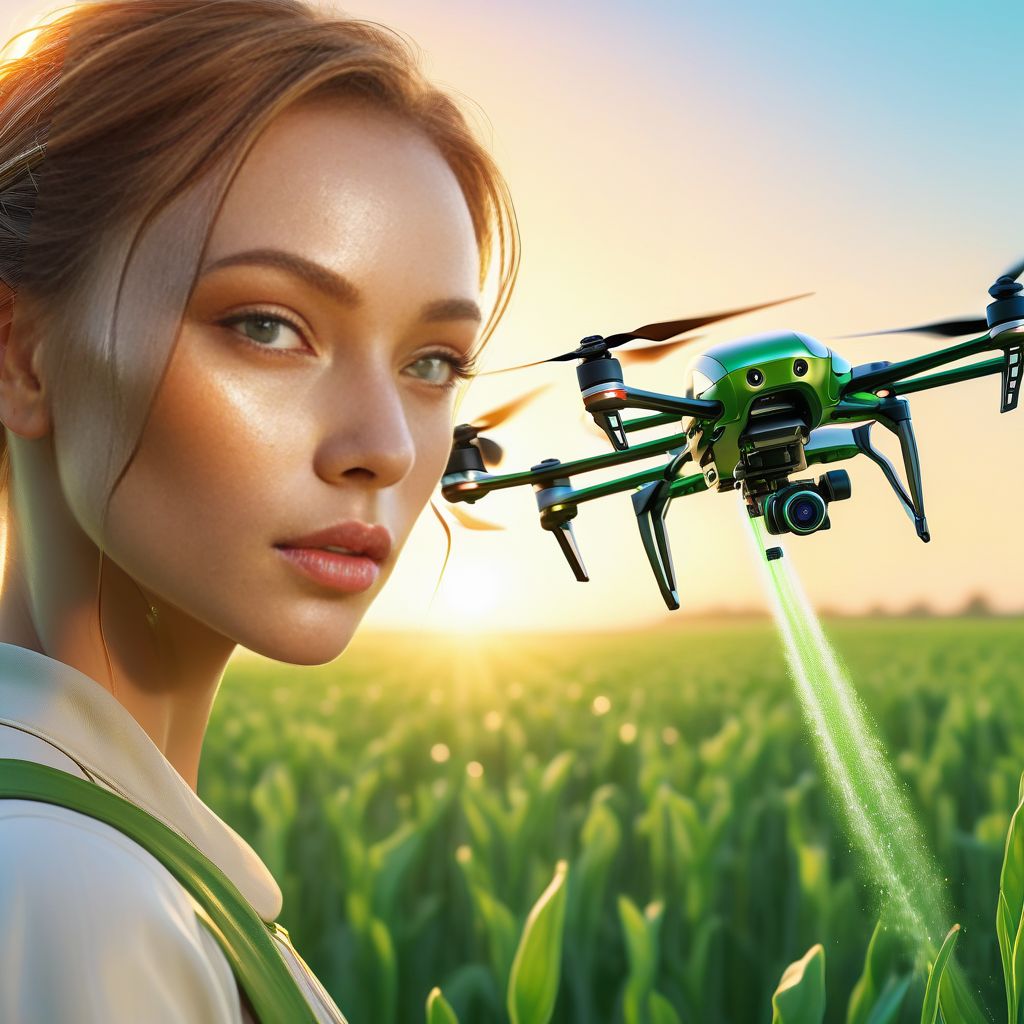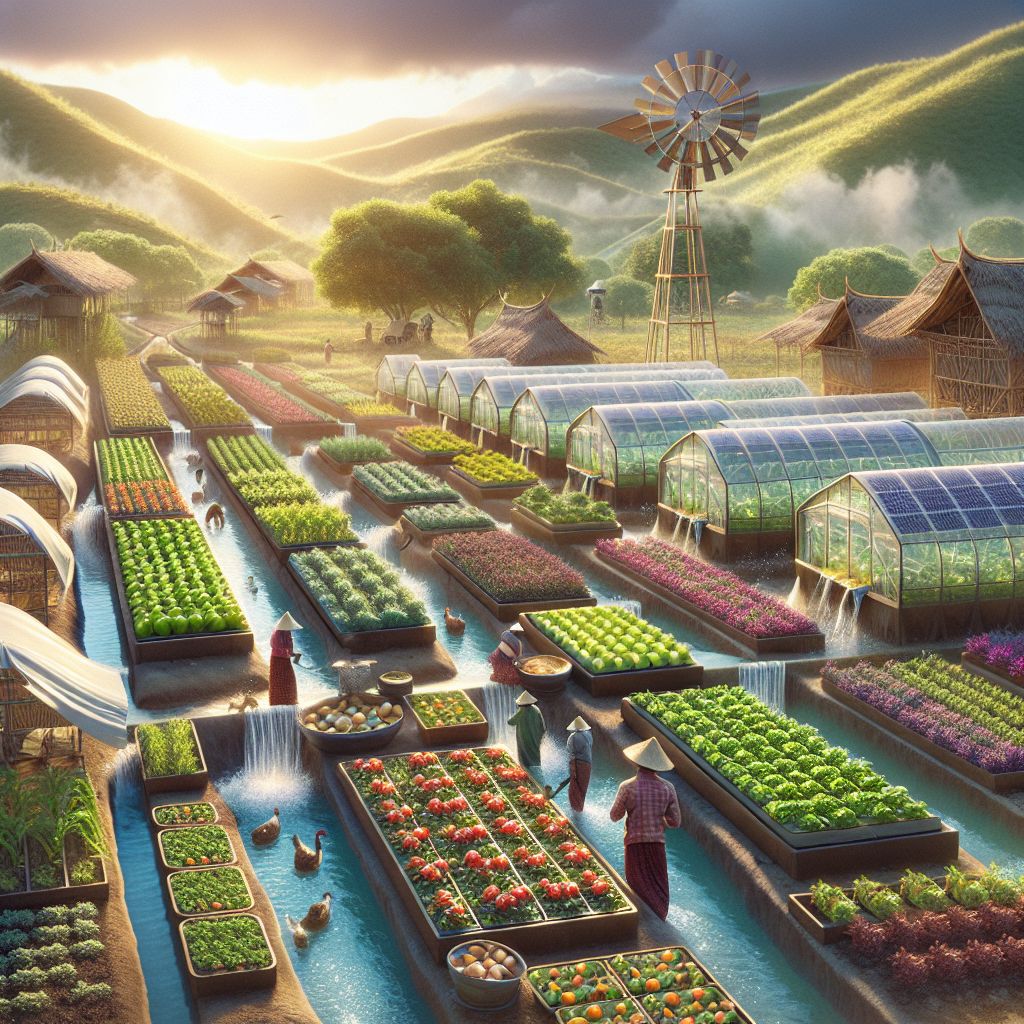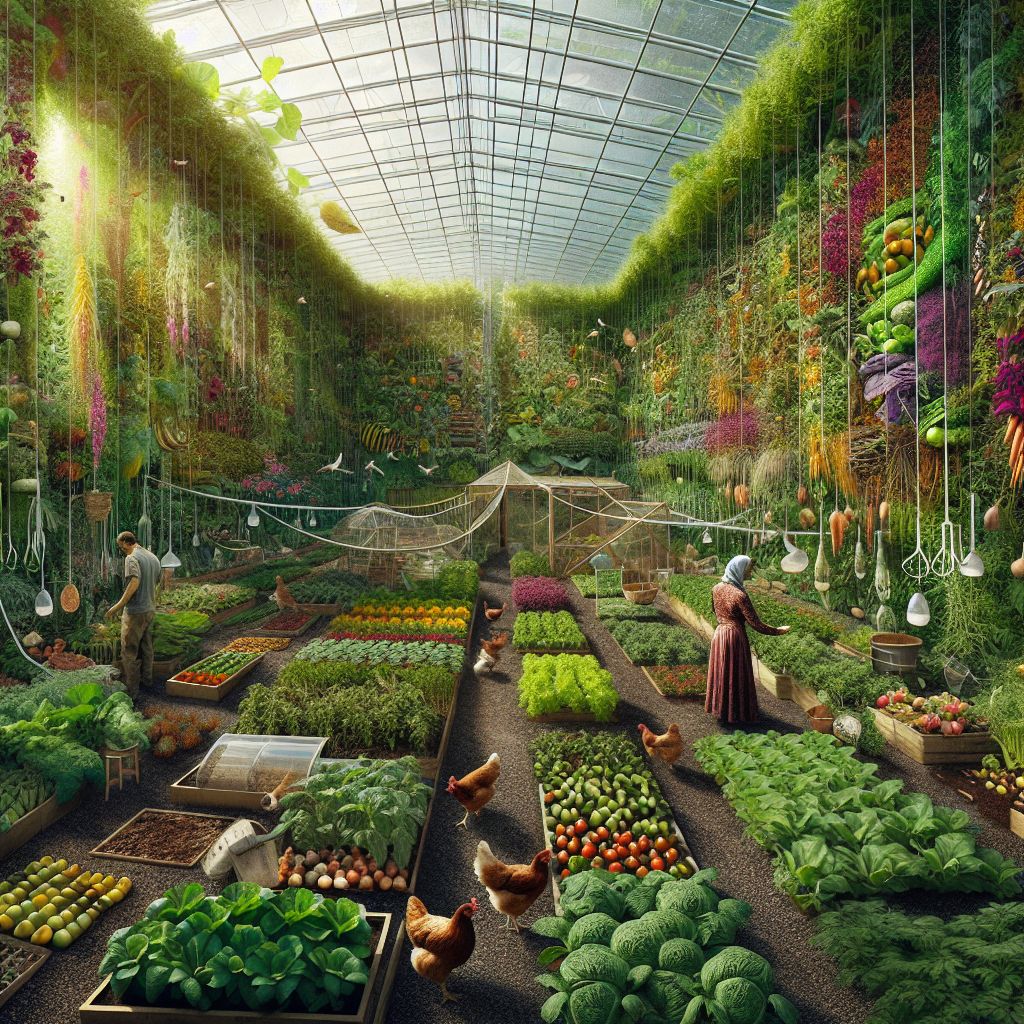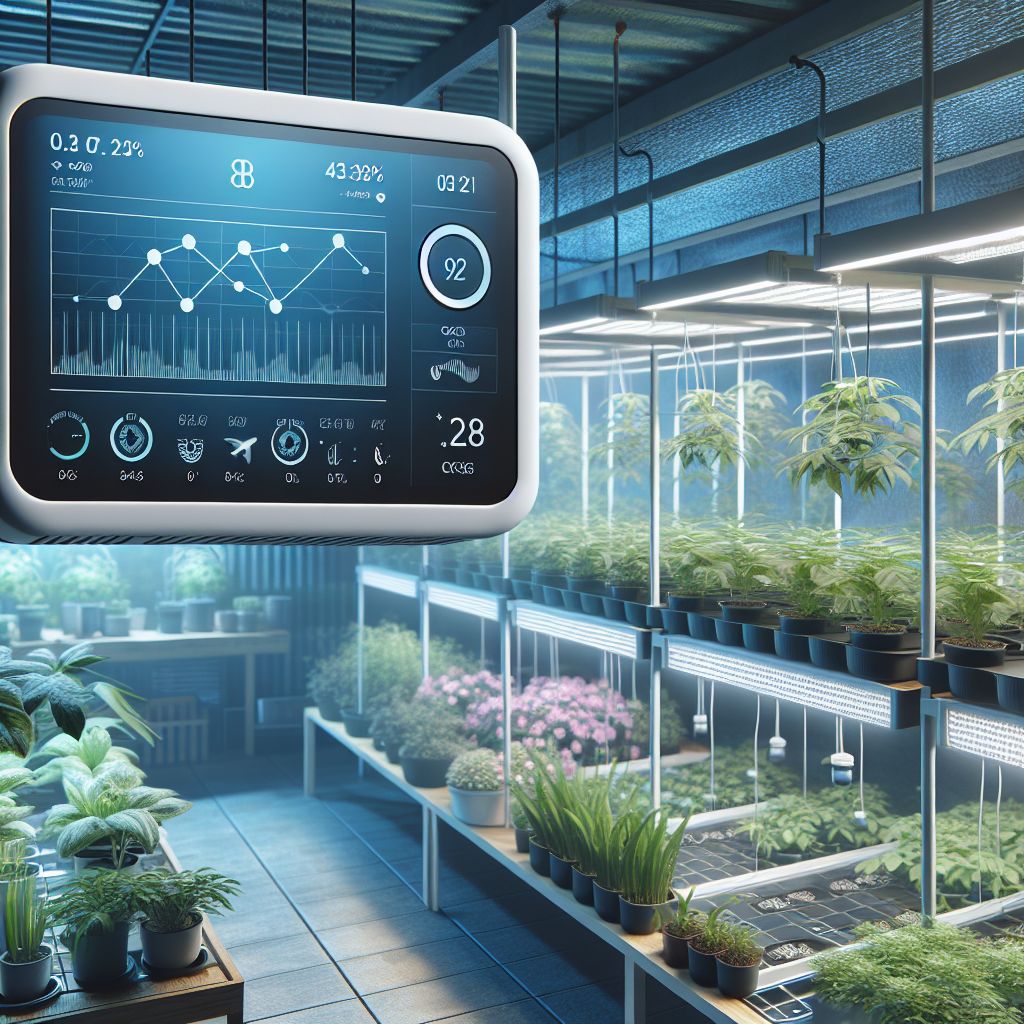Key Takeaways
- Smart greenhouses use advanced technologies like IoT, AI, and sensors to optimize growing conditions.
- They boost crop yields and quality while reducing resource waste, contributing to more sustainable farming practices.
- Hydroponic systems and renewable energy integration are key features of modern smart greenhouses.
- Despite higher initial costs, smart greenhouses can lead to long-term savings and increased resilience against climate change.
- Real-world examples show that smart greenhouses are not just a concept, but a successful and growing trend in US agriculture.
Revolutionizing Agriculture with US Smart Greenhouse Trends
Imagine walking into a greenhouse where everything is fine-tuned for the plants’ health—temperature, humidity, light, and even the nutrients they receive. This isn’t a scene from a sci-fi movie, it’s what’s happening in smart greenhouses today. These high-tech structures are revolutionizing how we approach agriculture, turning traditional farming on its head and setting new standards for efficiency and productivity.
Boosting Crop Yields with High-Tech Solutions
One of the most exciting aspects of smart greenhouses is their ability to dramatically increase crop yields. By creating the perfect environment for plants, these greenhouses can produce more food in less space and with less water. That’s a big deal, especially as our global population continues to grow and we need to find ways to feed more people without harming the planet.
Embracing Sustainable Farming Practices
Besides increasing yields, smart greenhouses are a beacon of sustainability. They use resources wisely, cutting down on water usage with systems like hydroponics, where plants grow in nutrient-rich water rather than soil. They also make the most of natural light and supplement with energy-efficient LED lighting, slashing electricity usage compared to traditional farming methods.
Crucial Technologies Driving Smart Greenhouse Growth
Now, let’s dig into the tech that’s making all this possible. It’s not just one or two innovations, it’s a whole suite of them working together to create these incredibly productive environments.
Automated Climate Control Systems
Climate control is at the heart of smart greenhouses. With automated systems, the internal environment of the greenhouse can be adjusted in real-time to match the specific needs of the plants. Sensors track temperature, humidity, and CO2 levels, and the system responds by tweaking those conditions to maintain the optimal growing environment. This level of control is crucial for reducing plant stress and increasing yield.

“Greenhouse Environmental Control …” from solarinnovations.com
Advanced Sensing and Monitoring
Sensors are the eyes and ears of a smart greenhouse. They collect data on everything from soil moisture to leaf temperature, giving growers a detailed picture of plant health. This data is key to making informed decisions about how to manage the greenhouse, and it helps prevent problems before they start. It’s proactive, not reactive, farming—and it’s incredibly effective.
Integrated IoT Solutions
Internet of Things (IoT) technology ties all the sensors and systems together, allowing them to communicate with each other and with the grower. With IoT, a smart greenhouse can be managed from a smartphone or computer, with real-time alerts and analytics to guide decision-making. It’s a level of convenience and control that traditional farming can’t match.
With these technologies, smart greenhouses are setting a new standard for what’s possible in agriculture. They’re not just growing plants, they’re growing a more sustainable future for all of us. And that’s something worth getting excited about.
Energy-Efficient Designs and Renewable Energy Integration
Energy efficiency is a cornerstone of the smart greenhouse concept. Traditional greenhouses require significant energy to maintain climate control, but smart greenhouses are different. They’re designed to make the most of natural resources, using advanced materials and building techniques to minimize energy loss. Insulation is key, as are smart glass or plastic coverings that can adjust to let in more or less light and heat.
- Utilize double-layered panels to trap heat during cooler months.
- Integrate solar panels to power fans, lights, and monitoring systems.
- Use geothermal heating to maintain optimal temperatures without fossil fuels.
By integrating renewable energy sources like solar or wind power, smart greenhouses can operate more independently from the grid, reducing their carbon footprint and operational costs. This is not only good for the planet but also for the bottom line of the farms that adopt these practices.
Moreover, the design of a smart greenhouse often includes rainwater harvesting systems, which reduce the reliance on external water sources. These systems collect rainwater, store it, and use it for irrigation, making the entire operation more self-sufficient and less vulnerable to drought.
It’s this synergy between design and technology that makes smart greenhouses such a powerful tool in the fight against climate change and resource scarcity.
Hydroponic Systems: An Eco-Friendly Water Solution
Hydroponics is a soil-less farming method that’s at the forefront of smart greenhouse technology. In these systems, plants grow in a water-based, nutrient-rich solution, which means they require much less water than traditional farming. Hydroponics allows for precise control over nutrients and eliminates the need for soil tilling, reducing the risk of soil erosion and water runoff.

“Hydroponic cultivation of …” from commons.wikimedia.org
Vertical Farming: Maximizing Space and Minimizing Impact
Another innovative approach within smart greenhouses is vertical farming. By growing crops in stacked layers, vertical farms maximize space efficiency and can be established in urban areas where traditional farming space is scarce. This method not only saves space but also reduces transportation costs and emissions, as food can be grown close to where it will be consumed.
Turning Challenges into Opportunities
“Every challenge in our journey towards sustainable agriculture is an opportunity to innovate and grow. Smart greenhouses are a testament to our ability to turn obstacles into stepping stones for a greener future.”
Transitioning to smart greenhouses isn’t without its challenges. The initial investment in technology and infrastructure can be daunting for many farmers. However, these challenges are also opportunities. By addressing them head-on, we can develop new solutions that make smart greenhouses more accessible and efficient.
For instance, the development of more affordable sensor technology and the decreasing cost of renewable energy solutions are making smart greenhouses an increasingly viable option for a wider range of growers. Moreover, as more farmers adopt these technologies, the shared knowledge and experiences can help to streamline processes and reduce costs even further.
Furthermore, the data collected from smart greenhouses can provide invaluable insights into plant growth and health, leading to innovations in other areas of agriculture and beyond. The more we learn, the more we can improve, and the greater the benefits for everyone involved.
Overcoming Technical Hurdles in Smart Greenhouses
The technical side of smart greenhouses can seem overwhelming at first. There’s a lot to manage, from installing sensors and automation systems to integrating IoT technology. But with the right approach, these hurdles can be cleared.
It starts with education and training. Growers need to become comfortable with the technology that powers smart greenhouses. This might involve workshops, online courses, or working with tech-savvy consultants. Once the knowledge is in place, the rest becomes much easier.
Cost Efficiency: Balancing Initial Investments and Long-Term Gains
There’s no sugarcoating it: setting up a smart greenhouse requires a significant upfront investment. But it’s important to look at the big picture. These initial costs are balanced by long-term gains in efficiency, productivity, and sustainability.
“Smart greenhouses are like planting a seed. You invest at the beginning, nurture it with the right technology and practices, and then reap the rewards as it grows into a thriving, sustainable operation.”
For example, while the cost of installing solar panels can be high, the reduction in energy bills over time can more than make up for it. Similarly, the water savings from hydroponic systems can lead to lower operating costs and a smaller environmental footprint.
When considering the switch to a smart greenhouse, it’s crucial to perform a cost-benefit analysis. Look at the potential savings on water, energy, and labor against the initial setup costs. Often, the long-term savings are substantial enough to justify the investment.
Adapting to Climate Change with Resilient Agricultural Practices
Climate change is one of the biggest threats to traditional farming, but smart greenhouses offer a way to adapt and even thrive. By controlling the growing environment, smart greenhouses can protect crops from extreme weather, from heatwaves to frosts.
This resilience is a major advantage, not just for the individual grower but for our food security as a whole. As weather patterns become more unpredictable, the ability to grow food in a controlled environment will become increasingly important.
Case Studies: Successful Smart Greenhouse Operations
Real-world examples help to illustrate just how effective smart greenhouses can be. Let’s take a look at a few success stories.
One operation in California was struggling with water scarcity. By switching to a hydroponic smart greenhouse system, they were able to reduce their water usage by 90% while increasing their crop yield. It was a win-win situation, made possible by the innovative use of technology.
Pioneering Farmers: Stories of Transformation and Success
Another story comes from a small urban farm that adopted vertical farming techniques. Despite having limited space, they were able to produce enough greens to supply local restaurants and markets, proving that you don’t need acres of land to be a successful farmer.

These stories are just the tip of the iceberg. Across the country, farmers are finding that smart greenhouses are not just a passing trend but a viable, profitable, and sustainable way to grow food. And as more growers join the movement, the future of farming looks brighter than ever.
Data-Driven Decisions: How Analytics Are Shaping Agriculture
The backbone of any smart greenhouse is the data analytics that transform raw data into actionable insights. Growers can now use this data to make informed decisions about planting, harvesting, and everything in between. Advanced analytics can predict plant growth patterns, optimize harvest schedules, and even alert farmers to potential issues before they become problems. It’s a proactive approach to farming that’s made possible by technology.
The Next Wave of Agricultural Innovation
As we look to the future, the next wave of agricultural innovation is likely to be driven by even more advanced forms of technology. We’re talking about things like gene editing for crop improvement, robotics for automated harvesting, and AI-driven pest management systems. These technologies will continue to push the boundaries of what’s possible in agriculture, making farming more efficient, sustainable, and resilient.
The Growing Influence of AI and Machine Learning
Artificial Intelligence (AI) and Machine Learning (ML) are set to play a pivotal role in the evolution of smart greenhouses. These technologies can process vast amounts of data much faster and more accurately than humans ever could. They can learn from this data, identifying patterns and making predictions that help optimize greenhouse operations. For instance, AI can forecast crop yields or detect plant diseases early on, ensuring that the produce is of the highest quality.
Machine learning algorithms can also tailor the greenhouse environment to the specific needs of each plant species, adjusting factors like light, temperature, and humidity to create the perfect growing conditions. This level of customization is unprecedented in traditional farming and is a testament to the power of AI and ML in agriculture.
Frequently Asked Questions
Now, let’s address some common questions about smart greenhouses to clarify any doubts and provide deeper understanding.
- What is a smart greenhouse?
- How do smart greenhouses contribute to sustainability?
- What are the initial costs for setting up a smart greenhouse?
- Can smart greenhouses operate in any climate?
- How do smart greenhouses utilize the Internet of Things (IoT)?
These questions touch on the fundamentals of smart greenhouses and their role in modern agriculture.
What is a Smart Greenhouse?
A smart greenhouse is a glass or plastic enclosure that uses sensors, automation, and other technologies to create an optimal environment for plant growth. Unlike traditional greenhouses, smart greenhouses are highly efficient, using data and technology to reduce waste and maximize production.
How Do Smart Greenhouses Contribute to Sustainability?
Smart greenhouses contribute to sustainability by using resources like water and energy more efficiently. They can reduce the use of pesticides and fertilizers through precision application, and their controlled environment means that food can be grown year-round, reducing the need for out-of-season imports. To learn more about these advanced systems, read about advanced automated greenhouse technology and its benefits for smart farming.
What Are the Initial Costs for Setting Up a Smart Greenhouse?
The initial costs for setting up a smart greenhouse can vary widely, but here are some ballpark figures:
- Basic structure and covering: $10-$30 per square foot
- Climate control systems: $5,000-$20,000
- Hydroponic systems: $10-$20 per square foot
- Sensor and monitoring equipment: $1,000-$5,000
- IoT integration: $3,000-$10,000
While these numbers might seem steep, it’s important to remember that they represent an investment in a more efficient and sustainable future.
Can Smart Greenhouses Operate in Any Climate?
Yes, smart greenhouses can operate in virtually any climate. Their advanced climate control systems allow them to maintain the perfect environment for plant growth regardless of external weather conditions. This makes them ideal for regions where traditional outdoor farming is challenged by extreme weather.
- Heat retention technologies for cold climates
- Cooling systems for hot and arid regions
- Adjustable coverings to manage light intake
With these features, smart greenhouses can ensure consistent crop production all year round.
How Do Smart Greenhouses Utilize the Internet of Things (IoT)?
Smart greenhouses utilize IoT to connect various sensors and devices within the greenhouse to the internet. This allows for real-time monitoring and control of the greenhouse environment from anywhere. IoT enables the following:
- Remote access to climate control settings
- Automated adjustments based on sensor data
- Data collection for analytics and machine learning
- Integration with other smart farming systems
Through IoT, smart greenhouses become more than just a growing space, they become a hub of precision agriculture, finely tuned to produce the best possible results.
As we embrace these advanced adoption and growth insights, it’s clear that the future of farming is smart. Smart greenhouses represent a leap forward in agricultural technology, offering a sustainable, efficient, and highly productive way to meet the world’s food needs. By understanding and implementing these trends, we can look forward to a greener, more bountiful future for everyone.





